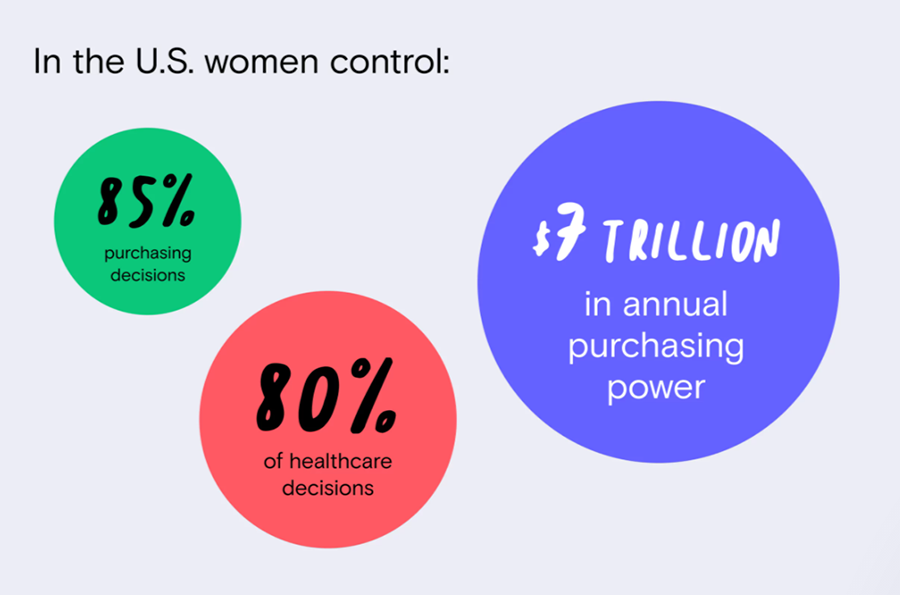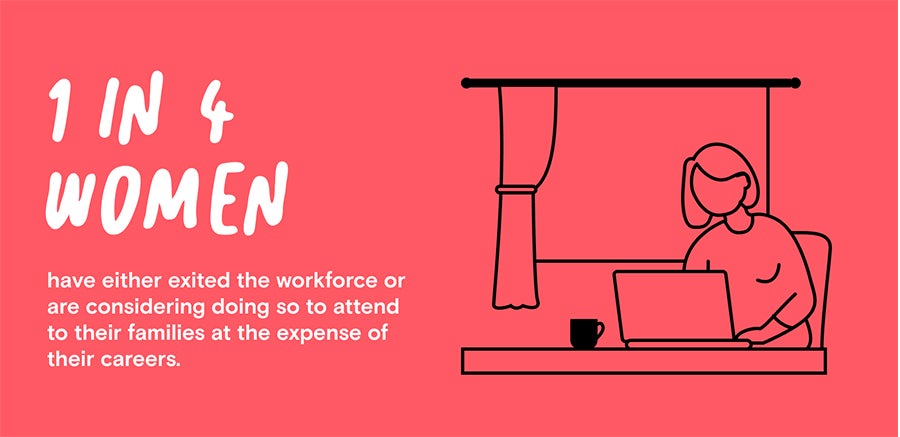Dear Future President—What Women Want From Our Next Leader
By Carolyn Witte, Co-Founder and CEO, Tia | Felicity Yost, Co-Founder, Tia | Lisa Suennen, Leader, Manatt Digital and Technology | Morgan Craven, Consultant, Manatt Health
Editor’s Note: In a new white paper, summarized below, Manatt Health partners with Tia to reveal how women would advise the next President of the United States, regardless of who it is, on their healthcare priorities for the upcoming term. Findings are based on an online survey of 900 women in the United States, ages 22 to 45—representing all income levels, races, ethnicities, geographic regions and political beliefs—to better understand their healthcare priorities. The survey was conducted by Merrill Research, a leading market research firm, from September 16–22, 2020. Click here to download a free copy of the full white paper and here to view a free webinar discussing the survey’s key results.
Women are economic and political powerhouses, with the ability to shape economies and sway elections. Despite making up just over half of the U.S. population, women control 85% of purchasing decisions—including 80% of healthcare decisions—and clock in with a whopping $7 trillion in annual purchasing power. As such, women are typically the de facto Chief Medical Officer for not just themselves but their families and extended families.1 Moreover, in every presidential election since 1984, women have turned out to vote at a higher rate than men.2

At the same time, women have been disproportionately impacted by the events of 2020, which is coloring their thinking about the impending election. Given the global pandemic, resulting unstable economy, work-from-home and “Zoom school” pressures, and the concomitant public policy controversies over gender equity, women have experienced unprecedented stress. One in four women either have exited the workforce or are considering doing so to attend to their families at the expense of their careers. These economic and personal stressors amplify existing societal and health challenges that women face. For women of color and those in “essential worker” roles, the impact of this stress is even more profound.3

Key Findings
With the 2020 presidential election drawing near, it’s no surprise that healthcare is a top-of-mind issue for female voters planning to cast their ballots. For many, the fulcrum of the election rests on this topic. But what exactly do women think about the direction of healthcare in the United States?
Given women’s hefty stake in the election’s outcome, understanding what women want and need from the healthcare system—and how they expect the future president to drive policies that deliver it—is key to understanding the type of mandate that female voters will or will not deliver. In a new survey from Tia and Manatt Health, respondents were asked how they would advise the next U.S. President, regardless of who it is, on their healthcare priorities for the upcoming term. Top-level findings from the survey include:
1. Across all demographic groups, women agree more than they disagree about health and healthcare priorities.
Despite the many demographic and philosophical differences among those surveyed, there was a surprising level of accord in how women think about health. The survey found that, for many policy issues, the single most important quality to inform opinions on healthcare was, in fact, being female. This was true across virtually every demographic category—including age, income, geography, race and ethnicity, and even political party in many cases. With some variation between categories, women surveyed expressed nearly universal sentiment on key issues such as safeguarding current protections for individuals with preexisting conditions; ensuring coverage parity for mental health and substance use disorder care; requiring insurance coverage for pre- and post-natal care and equal coverage for telehealth; policies that expand access to affordable health insurance; and the need for a new national policy to fight COVID-19.
2. Women view “women’s health” as more than just reproductive health—it encompasses physical, mental and emotional well-being.
Historically, healthcare issues encompassed by the term “women’s health” have focused narrowly on so-called “bikini medicine” categories, such as gynecology and breast cancer. Rarely does public discourse or public policy in this health field go beyond the physical and reproductive health categories, into which women’s health is all too commonly reduced. But when women in the study were asked, “When it comes to your own health, what are your biggest personal health issues?” none of these issues top the list, even among the childbearing-aged women on which this survey focused. While issues related to gynecology, maternal health and/or other bikini medicine categories are clearly important to women, they are first and foremost focused on mental health, COVID-19, stress management, the cost of healthcare and being overweight, among other issues unrelated to reproduction.
Despite having other first-level priorities, women do care deeply about issues related to pregnancy, contraception, abortion and fertility. A majority of women surveyed believe that insurance should cover a wide range of reproductive health services, including pre- and post-natal care, contraception, fertility treatments, abortion, and other gender-specific care coverage. There are varying levels of support for coverage of certain services based on political affiliation, race/ethnicity and income levels.
3. Women want healthcare solutions to address social and economic factors beyond what happens at the doctor’s office, including factors such as lack of affordable childcare, unreliable access to nutritious food and wage inequality.
Women consider social and economic policies and supports to be deterministic of and essential to their health and well-being, at a level that significantly exceeds any other healthcare-related issues. In fact, women overwhelmingly think about health as much more than traditionally defined “healthcare” and believe that the most critical services in their lives address far more than medicine and biology.
Even women with no children ranked affordable childcare and payment for family caregiving among the top three contributors to women’s health, as did women across all income levels. This is no surprise given that 63% of women surveyed had either children or adults needing caregiver support living in their homes.
Following support for caregivers, women ranked “access to healthy, affordable food” as highly essential to their health and well-being. Intuitively, most people know how fundamental healthy food is to good health, but rarely are strategies to navigate access formally addressed within the healthcare system. Given that so many women cited “being overweight” as a top personal health concern, it is clear that women need assistance appropriately linking the impact of food on weight and health in their healthcare system experiences. Effective policy should recognize this challenge and mitigate its impacts through physician education, nutrition and food security screenings, referrals to and enrollment support for public nutrition services (e.g., Supplemental Nutrition Assistance Program), and creative approaches to insurance coverage.
Conclusion
At a time of polarization within our nation, it is notable that, at least when it comes to health, there is far more agreement than disagreement among women in the age group 22–45, a group that comprises more than 50% of all women in the United States.4 Even the believed divisions between Republican and Democratic women are far less than are publicly represented. Health for women is an opportunity to make investments in issues where there is common ground, which is an opportunity for the President and others to make a positive difference with a large voting constituency. Women may play the central role when it comes to making family healthcare decisions, but it is time for the male policy-making majority to walk a mile in women’s shoes and contribute to the betterment of the nation as a whole.
2 https://www.pewresearch.org/fact-tank/2020/08/18/men-and-women-in-the-u-s-continue-to-differ-in-voter-turnout-rate-party-identification/
3 http://womenintheworkplace.com
4 https://www.statista.com/statistics/241488/population-of-the-us-by-sex-and-age/
